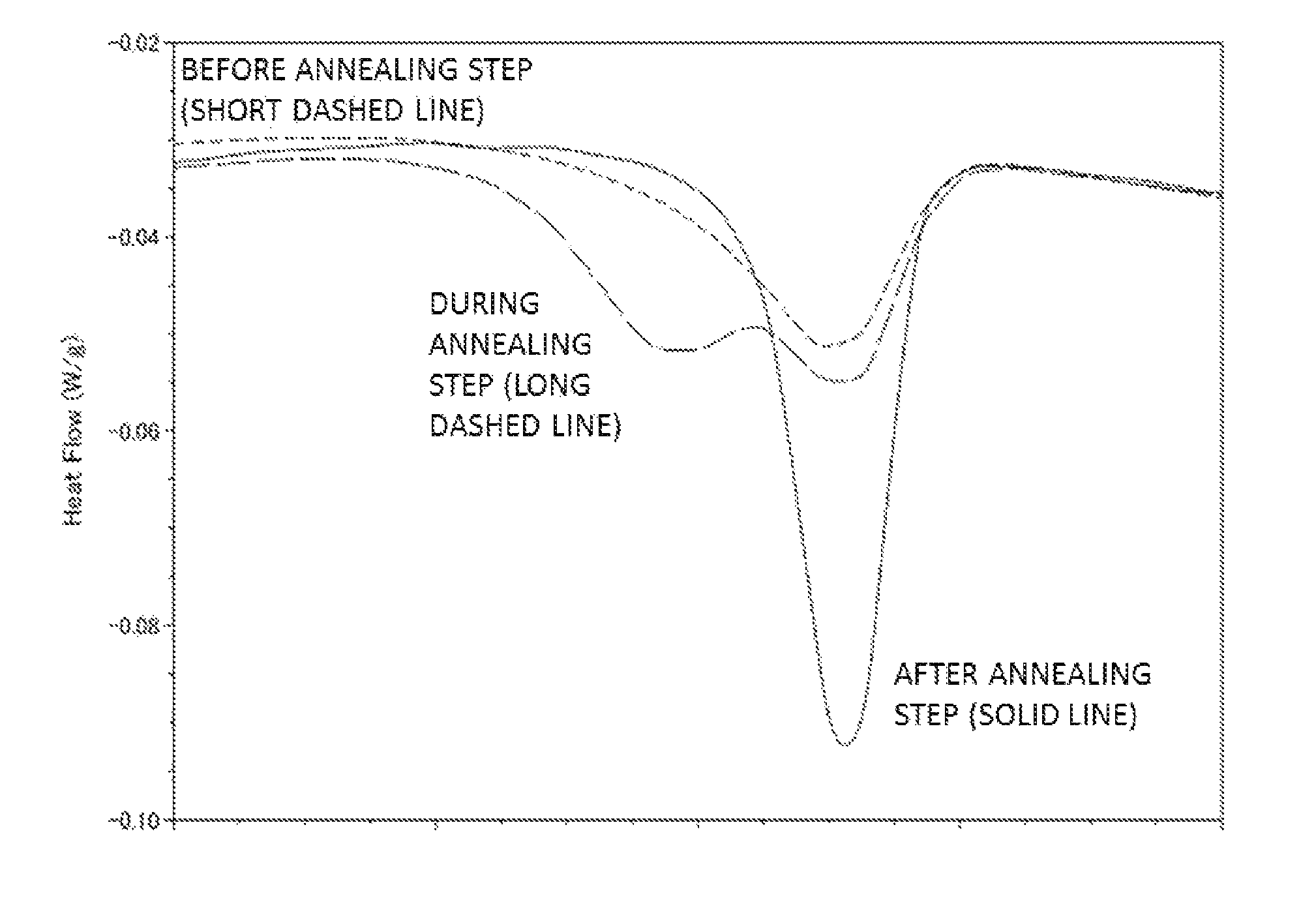Method of producing a toner particle
a toner particle and production method technology, applied in the field of toner particle production methods, can solve the problems of reduced heat applied at the fixing apparatus, difficult coexistence of low-temperature fixability, and deterioration of stability of toner, and achieve satisfactory low-temperature fixability, good heat-resistant storage stability, and small change in properties.
- Summary
- Abstract
- Description
- Claims
- Application Information
AI Technical Summary
Benefits of technology
Problems solved by technology
Method used
Image
Examples
examples
[0129]The present invention is specifically described through the examples provided below, but the present invention is not limited to or by these examples. The number of parts used in the examples indicates mass parts in all instances.
[0130]
[0131]100.0 parts of sebacic acid and 106.5 parts of 1,12-dodecanediol were added to a reactor equipped with a stirrer, thermometer, nitrogen introduction line, water separator, and vacuum apparatus and were heated to a temperature of 130° C. while stirring. 0.7 parts of titanium(IV) isopropoxide was added as an esterification catalyst followed by raising the temperature to 160° C. and carrying out a condensation polymerization for 5 hours. The temperature was then raised to 180° C. and a reaction was run while reducing the pressure until the desired molecular weight was reached, thereby yielding crystalline polyester 1. This crystalline polyester 1 had a weight-average molecular weight (Mw) of 19,000 and a melting point (Tm) of 84° C.
[0132]
[013...
examples 1 to 17
[0163]An annealing treatment was carried out under the conditions shown in Table 5 using the resin particle dispersions 1 to 11, after which the temperature was cooled to 20° C. while continuing to stir. This was followed by hydrochloric acid addition•washing•drying as in the production of resin particle 1 to obtain toner particles 1 to 17.
example 18
[0164]After carrying out the solvent removal step entirely as in the production of resin particle 1, the temperature decline was stopped at 50° C. and an annealing step was carried out by holding the temperature for 300 minutes in this state. The temperature variation range in the annealing step was 2° C. and the maximum temperature variation rate was 0.1° C. / minute. After the completion of the annealing step, the temperature was cooled to 20° C. while continuing to stir. Thereafter, toner particle 18 was obtained by hydrochloric acid addition•washing•drying as in the production of resin particle 1.
PUM
| Property | Measurement | Unit |
|---|---|---|
| temperature | aaaaa | aaaaa |
| temperatures | aaaaa | aaaaa |
| mass % | aaaaa | aaaaa |
Abstract
Description
Claims
Application Information
 Login to View More
Login to View More - R&D
- Intellectual Property
- Life Sciences
- Materials
- Tech Scout
- Unparalleled Data Quality
- Higher Quality Content
- 60% Fewer Hallucinations
Browse by: Latest US Patents, China's latest patents, Technical Efficacy Thesaurus, Application Domain, Technology Topic, Popular Technical Reports.
© 2025 PatSnap. All rights reserved.Legal|Privacy policy|Modern Slavery Act Transparency Statement|Sitemap|About US| Contact US: help@patsnap.com



